
Luckily it didn’t attack anyone but will most likely still get deported. Kuwaitiful has more information [Here]


Luckily it didn’t attack anyone but will most likely still get deported. Kuwaitiful has more information [Here]


The Interior Ministry in cooperation with the Public Authority for Agricultural Affairs and Fish Resources (PAAAFR) is said to be looking for ‘pet’ wild animals which put at risk the lives of citizens and residents, reports Al- Anba daily. The authorities have called on residents and citizens to notify them if they are aware of any wild animals in their vicinity. The daily added, the authorities plan to confiscate wild (pet) animals and punish their keepers.
This is done in the best interests and safety of the people. The sources added the Kuwaiti Penal Code punishes those who neglect animals and the civil law punishes the owner by forcing him to compensate the victim if attacked by the wild animal.
The source pointed the concerned authorities have received several complaints accusing people of breeding wild animals such as tigers, lions and crocodiles. Meanwhile, a Kuwaiti man shot dead a crocodile with a bullet to his head after the reptile crept into his house recently in Salwa, reports Al-Rai daily.
According to reports the man was at work and his maid called him to say she could not enter the house because a big lizard was in the doorway. The man rushed home and found the ‘pet’ crocodile which had reportedly escaped from its keep from a neighboring house. [Source]
It’s about damn time.
via desertgirl
[Vimeo]
All the birds in the video were recorded in different places around Kuwait. I knew there were a bunch of bird enthusiasts in Kuwait and after watching the short film I understand why. Who knew we had so many unique birds here? The film was shot by Jassim Muqeem and you can check out more of his stuff on his website [Here]

With the very recent unfortunate animal mass murder event in Kuwait, I wanted to discuss the very unfortunate laws that regulate animal abuse in Kuwait.
The Kuwaiti constitution does not mention any animal rights.
The Kuwaiti penal (criminal law) does not specify that the abuse of animals is a crime.
However the only law that discusses the killing of an animal is article 253 of the criminal law:
A person who kills an animal owned by another, gives it a poisonous or harmful substance, injures it, makes it useless or decreases its benefits, deliberately and unjustifiable shall be punished up to 2 years of imprisonment and/or shall pay up to 2000 rupees
People make the mistake to think that the above article makes animal abuse a crime, it does not. The article specifies that the animal has to belong to someone so there is no regards for stray dogs. The article also specifies that the animal has to belong to someone other than the abuser. So if someone tortures their own dog, they are not punished.
Situation A
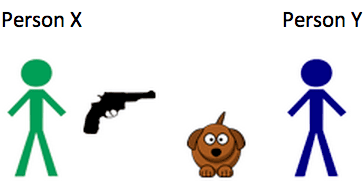
Person X kills the dog of person Y, with intent and for no reason. Person X is a criminal.
Situation B
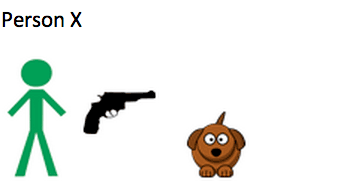
Person X kills a stray dog, person X is not a criminal.
If you are wondering why the article is written that way, its because animals are defined in Kuwaiti law as a materialistic item, in other words… an object. Your dog is considered to be like your phone, your car or like your laptop. Animals in other countries are considered living creatures while in Kuwait the article above on animal killing is located under vandalism in the penal law.
Some of laws are appalling and I am trying think of ways we can get them to change the one on animal abuse. Here are my suggestions on how we could possibly have them change the law (please email me if you have other ideas):
1- Talk to the parliament members, whether you voted for them or against them, whether you believe in voting or not, talk to them, they legally represent the whole nation, Kuwaiti and non Kuwaiti, individual or an organization. CALL THEM. WRITE TO THEM! https://www.kna.kw/clt/index.asp (the site is getting more interactive, ask for their numbers, or email me I have some)
2- Call or write to the municipality https://www.baladia.gov.kw/cbox/
3- Protest, write or sign a petition, ask for a decree (its way more efficient and faster than a law)
Sometimes a situation must happen for a new decree, law or bylaw to be enforced or issues. Let this be one.
Post by Fajer Ahmed – Legal Counsel
Have a Kuwait law related question? Email me at [email protected]
The legal opinions expressed in this post are those of the author Fajer. Opinions expressed by Mark or any other writer on mark248am1.wpenginepowered.com are those of the individual’s and in no way reflect Fajer’s opinion.
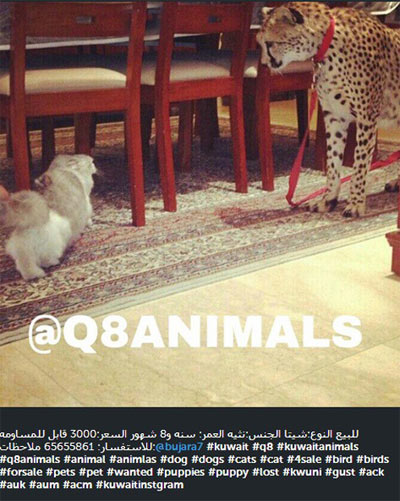
Two articles, one on PetaPixel the other at the Daily Mail. Both include photos from Kuwaiti Instagram accounts…
Thanks Wishbone
[YouTube] Warning: Graphic video of dogs being shot
About a year ago, I was asked by Mark to post on his blog from time to time on issues related to animals in Kuwait. I don’t get a chance to post very often, and when I do, it’s usually on an issue that’s particularly important to me or K’S PATH, the organization where I work. This particular post was prompted by what is certainly the most prolific case of animal abuse I’ve yet witnessed during my tenure in Kuwait.
On Friday, the 2nd of August 2013, a three-year-old girl was attacked by a pack of at least six stray dogs in Khairan area. The victim incurred serious although not life-threatening injuries, and has been reported to be recovering well. While the management of K’S PATH holds the victim and her family in its thoughts and prayers and extends its heartfelt condolence in this difficult time, the ensuing inhumane and brutal massacre of more than 80 reported stray dogs (to date) perpetrated by a group of individuals must not be condoned.
This statement questions the nature and objective of actions taken in retaliation to the attack, offers an insight into the nature of Kuwait’s stray dog overpopulation crisis, discusses the shortcomings of official animal control methods adopted to date, and concludes by proposing a long-term, safe and effective alternative successfully tested by K’S PATH.
The mauling and risk of assault of an individual by a pack of stray dogs is a serious concern that warrants definitive action by the relevant authorities to safeguard the community through humane measures – which in this case is incumbent upon the Public Authority for Agriculture and Fish Resources (PAAFR). PAAFR currently lacks the funding, equipment, or expertise to implement and enforce preventive and remedial measures. In most cases of such nature, members of the community approach K’S PATH as it is presently the sole organization with demonstrated capability in capturing and handling stray dogs in Kuwait.
Unfortunately in the aftermath of the recent incident, some of the individuals involved chose another route by taking matters into their own hands through vigilante actions. As this statement goes to press, there are conflicting reports of as many as 80 dogs shot or killed so far; some of them by stabbing, running over, and dismemberment or decapitation.
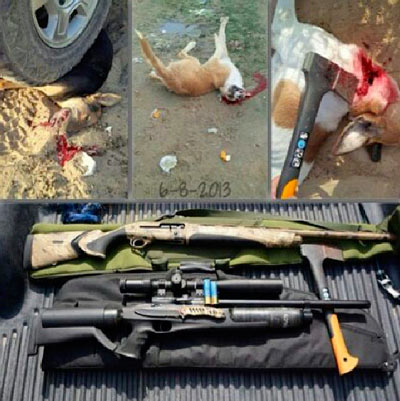
This original group of animal abusers blatantly publicized their actions on Instagram in a boastful fashion with graphic imagery of cadavers of murdered dogs, which further encouraged other individuals to follow suit by killing more dogs in what appears to have now taken a form of barbaric competition to slaughter as many dogs as possible to seemingly ‘avenge’ the attack on the little girl.
Indisputably and as a responsible measure to avert recurrences, the dogs that attacked the girl should have been identified, captured, and humanely euthanized (killed using a ‘good’ process of death). In fact, none of the dogs roaming Kuwait’s streets belong here.
What we must ask ourselves as a concerned community is whether a responsible and sustainable solution to Kuwait’s stray dog overpopulation lies with the impulsive and brutal recourse of a few individuals with hatchets, shotguns, rifles, and knives running around on a violent campaign of death, or whether we should instead adopt a more effective, humane and safer form of animal control.
Personally, I don’t believe Kuwait has any need to resort to violence to solve this problem. In point of fact, I have spent the last four years developing a program of animal control for Kuwait that is humane and effective, with the purpose in mind of making our communities safer.
In Kuwait, and across many countries, the initial program of animal control adopted used lethal gunshot. However, program administrators and field technicians soon concluded that gunshot is messy, ugly, dangerous for the community, and ineffective in two ways. Firstly, in order to ensure the death of an animal, the projectile must pass through the brain and enter the spinal cord. Any other single shot is very likely to merely injure or cripple the animal causing great suffering and potentially creating a more desperate, aggressive animal. Secondly, it is nearly impossible to eradicate an entire group of stray dogs through this method because dogs will not tolerate the sound of a gunshot. The dogs that flee will be extremely difficult or impossible to catch, eventually becoming what in this field is termed ‘capture resistant’. Gunshot did not last as a form of dog control in Kuwait for these very pragmatic reasons, and it is now forbidden for anyone to shoot dogs.
As gunshot was phased out, poisoning became the preferred method of control. It still is, though it is in the process of being replaced with the method I will propose last. Poisoning fails as a medium for dog control because only a fraction of the intended number of dogs will eat it. Of those who do ingest it, not all of them will die because quantity consumed is a crucial factor. Poison is extremely inhumane to the animal as it takes anywhere from 20 minutes to 72 hours to kill, again depending on dosage, rate of digestion, etc. Furthermore, poison will kill a stray dog as easily as an owned dog as well as a fox, a cat, an eagle, or a child. It is entirely indiscriminate.
Lethal gunshot and poisoning as forms of dog control have never been used effectively as a large-scale, long-term form of population control anywhere in the world. They have been used to affect short-term reduction in the overall population size, but they have never solved a large-scale dog problem. Both have been tried for many years in Kuwait with neither succeeding, leaving no possibility that either one will suddenly solve our stray dog problem. The most important factors to consider with these two forms of dog control are that they are unsafe, ineffective, and inhumane. Furthermore, they are outdated and have no place in the modern world. It is the equivalent of investing in steam technology to power our busses when there are much safer and frankly better methods available.
K’S PATH has the answers to this problem; we’ve painstakingly developed them over the course of many years. Read on to find out more.
Warning: Graphic photos below of the massacre after the link

As inspiration from an app called “The Dumbest Laws” I have decided to make a series of posts called “Kuwait laws you don’t need to know” so I could inform you on things you don’t need to be informed on. I don’t know how many of these posts I can come up with but one of my favorite things to do while working is finding and reading these weird laws.
So anyways, here is the first one, it’s an excerpt from an officially translated version (ignore their grammatical errors) of Law No.9 from 1969 “With Regards To The Possession of Dogs and Preventive Measures Against Rabies”:
Article 1
Possession of dogs is not permitted unless a license is obtained from the Ministry of Health
Article 2
License of one or more dogs requires an application to be submitted to the competent veterinary center giving the following details:
1- Name of applicant, title, age, nationality and address
2- The location where the dog will be kept
3- Breed of dog, color and distinctive marks
4- The source of where the dog was imported
Article 5
A collar with a metal plate shall be put around each dog, giving the serial number referred to, the plates are obtained from competent veterinary free of charge, the dog owner should request a replacement, in which case he will have to pay 250 fils.
If a dog is arrested without a plate it will be sent to the Dog Detainment Center, and will not be handed to the owner, unless he requests so 7 days from the day of arrest, and pays a fee of KD1
Article 6
All dogs of all types shall not be left in public places without being controlled with a mask on their mouth
Article 15
The provisions herein apply to Kuwait City. The City of Kuwait with regards to the implementation of this article means the vicinities surrounded by the third ring road, the Health and Educational Areas and the Sulbikhat area, unless the dog belongs to a Bedouin as watch or hunt dogs, whether the owners live in the city or the desert
Article 16
Violators of this law will be liable to a maximum term of one month imprisonment maximum and/or KD30 fine.
Keep in mind, this was back in 1969.
Post by Fajer Ahmed – Legal Counsel
Have a Kuwait law related question? Email me at [email protected]
The legal opinions expressed in this post are those of the author Fajer. Opinions expressed by Mark or any other writer on mark248am1.wpenginepowered.com are those of the individual’s and in no way reflect Fajer’s opinion.

One of these days an exotic animal is going to maul a driver and only then will anyone think about banning them. [Link]
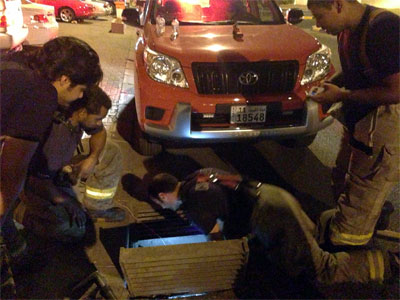
Local blogger Abdulla was on his way home late at night when he found a cat stuck in the sewers. Him and his friends tried to rescue the cat to no avail and as they were about to give up they decided to call 112. They didn’t think they would be willing to help but called just as a last resort and to their surprise (and mine), the 112 emergency service responded professionally and sent a fire department team to help save the cat.
You can read the full story on Abdulla’s blog [Here]
Just to balance things out with yesterdays post, here is a cat being cute hiding in the fridge at a local Coop. [YouTube]
via Frankom
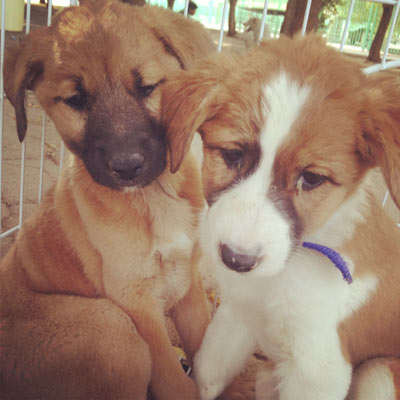
Thursday afternoon I passed by the animal market right next to the Friday Market so I could look for my friends dog. I hadn’t been there in years and even though I was expecting to find puppies and other animals there, I wasn’t expecting to find so many.

The market was just full of cages stacked on top of each other and filled with dogs and cats. I saw kittens that looked like they were born last week and I saw dogs shoved into cages so small they couldn’t fully stand in. Some were lucky enough to have drinking water in their cages while the unlucky ones didn’t. If that wasn’t already bad enough, right outside I spotted three dogs tied to trees that just looked extremely miserable and malnourished. I also assumed the dogs outside being sold were most likely the stolen ones.
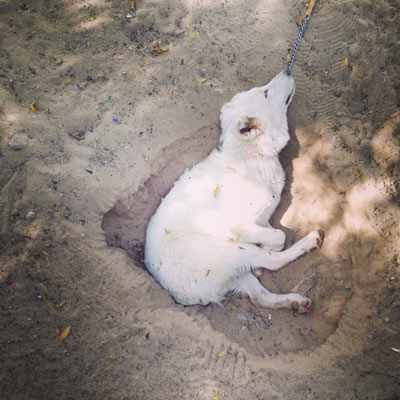
I’m honestly not really sure what can be done about this since I don’t believe there is any law against animal cruelty. I just wanted to bring the animals some exposure since after the incident where the municipality shut down the shops due to rent issues, everyone seems to have forgotten about the cruelty that takes place there. If you want to help then don’t purchase any animals from the animal market. If you do, the sellers end up profiting and they will just bring more animals to sell.
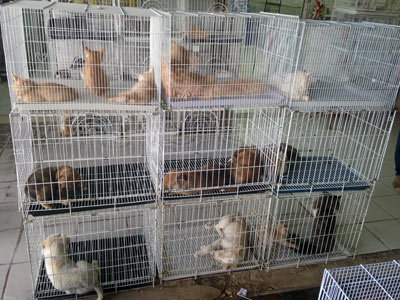

My friend had her dog stolen last night from her house in Shuwaikh. He’s a 5 month old doberman called Crixus. If anyone spots him please give her a call on 99902227.
Update: she’s offering a KD500 reward if found
Update2: The dog was found in Chabd
Eagle Rescue April 2013 from john peaveler on Vimeo.
Recently K’S PATH received a dog complaint in Ahmadi and when they arrived to the scene, they found an abandoned house that had an eagle caged up among other animals. The eagle is now with K’S PATH and it’s doing well.
If you’d like to help out and donate to K’S PATH Summer 2013 Maintenance Campaign click [Here]

If you want to help the elephants at the Kuwait Zoo you now can by purchasing the tshirt above. For those of you who don’t read Arabic the tshirt basically says “Love Malek and Dalal” who are the two elephants currently at the Kuwait Zoo. All proceeds from the tshirt sale will go towards the renovation of the elephant cage at the zoo by enriching it. The tshirts are for just KD10 and you can order them by sending an email to [email protected]
To know why the elephants need help, read my previous post [Here]